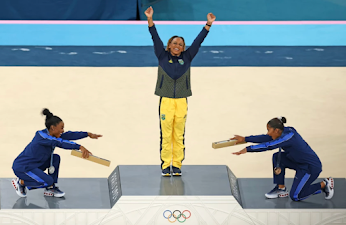Social semiotics is a field of study that examines how signs and symbols function to create and convey meaning. The social component of this indicates that it analyzes a variety of communication modes including text, images, gestures, and others. It was first discovered by Michael Halliday who mostly looked at language, then these I ideas were expanded on by Gunther Kress to also include visual communication. The overarching importance of this field of study is that it allows us to understand how meaning is first constructed, then communicated, and finally interpreted. It can enhance communication strategies, discover underlying messages in different contexts, and make us more aware of how we can convey meaning through many different modes.
Wednesday, June 4, 2025
Social Semiotics
Some rules associated with the methodology of social semiotics is vertical positioning, horizontal positioning, arrangement of elements, and colors. For positioning, the placement of certain things whether that be in the top, bottom, far left, or far right of the image conveys different meanings. For example things at the very top of an image convey what is imagined or desired, while the bottom is what is known or reality. Similarly, things on the far left indicate what is known, while things on the far right indicate what is unknown or new. There are also different messages for the overall composition of images. For example, symmetry conveys balance and harmony, while asymmetry conveys disorganization or chaos. Lastly, color is very important for conveying different emotions. For example, bright colors indicate more energy and excitement while dark colors indicate more seriousness.
To give some examples of how we can analyze images through the social semiotics method, I'll try my best to analyze these two images:
This image shows what is reality or known on the body through placement of the person on a deck near the bottom of the frame. Furthermore, what is imagined or desired is the miles and miles of unexplored nature towards the top of the image. Additionally, the image is very symmetrical with leading lines to the person in the middle representing the balance and harmony in serene nature. Also, the bright yellow jacket in the middle draws the attention of the viewer and helps to convey the individuality of the person optimism. Lastly, the reflection of the mountains on the lake help to also convey the underlying theme of self reflection and solitude in nature.
This image also conveys a lot of meaning. It demonstrates symmetry to show unity and balance where athletes from all over the world come together to compete in a sport they're each dedicated to. It also highlights bright colors to convey energy, joy, and excitement. Furthermore, our readings this week states, “While some news photographs may seem merely to record an event, the camera is not objective.” (Crusius & Channell, 2016, p. 81). I think this is a great example of this because one thing I believe was really intentional by the photographer taking this photo was the eye-level angle which helps convey equality. Conveying equality is important in this context because it further supports the actions happening in the image of two athletes supporting the first place winner in solidarity with her even though she was their competitor.
References:
Crusius, T., & Channell, C. (2016). The aims of argument: A text and reader (8th ed.). McGraw-Hill Education.
Subscribe to:
Post Comments (Atom)


No comments:
Post a Comment